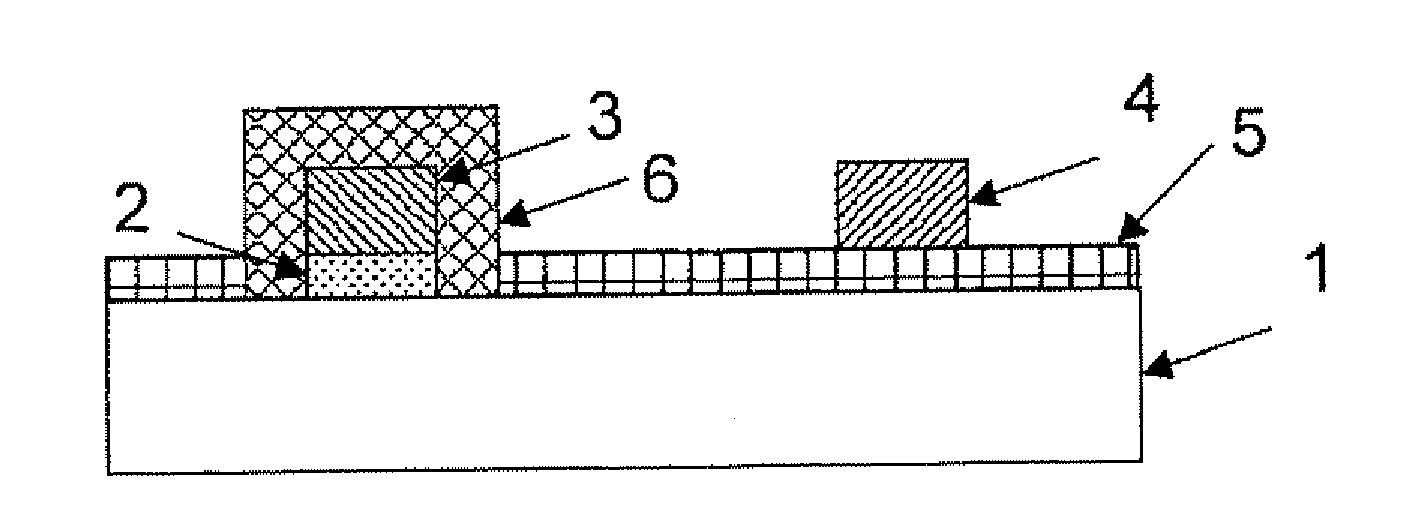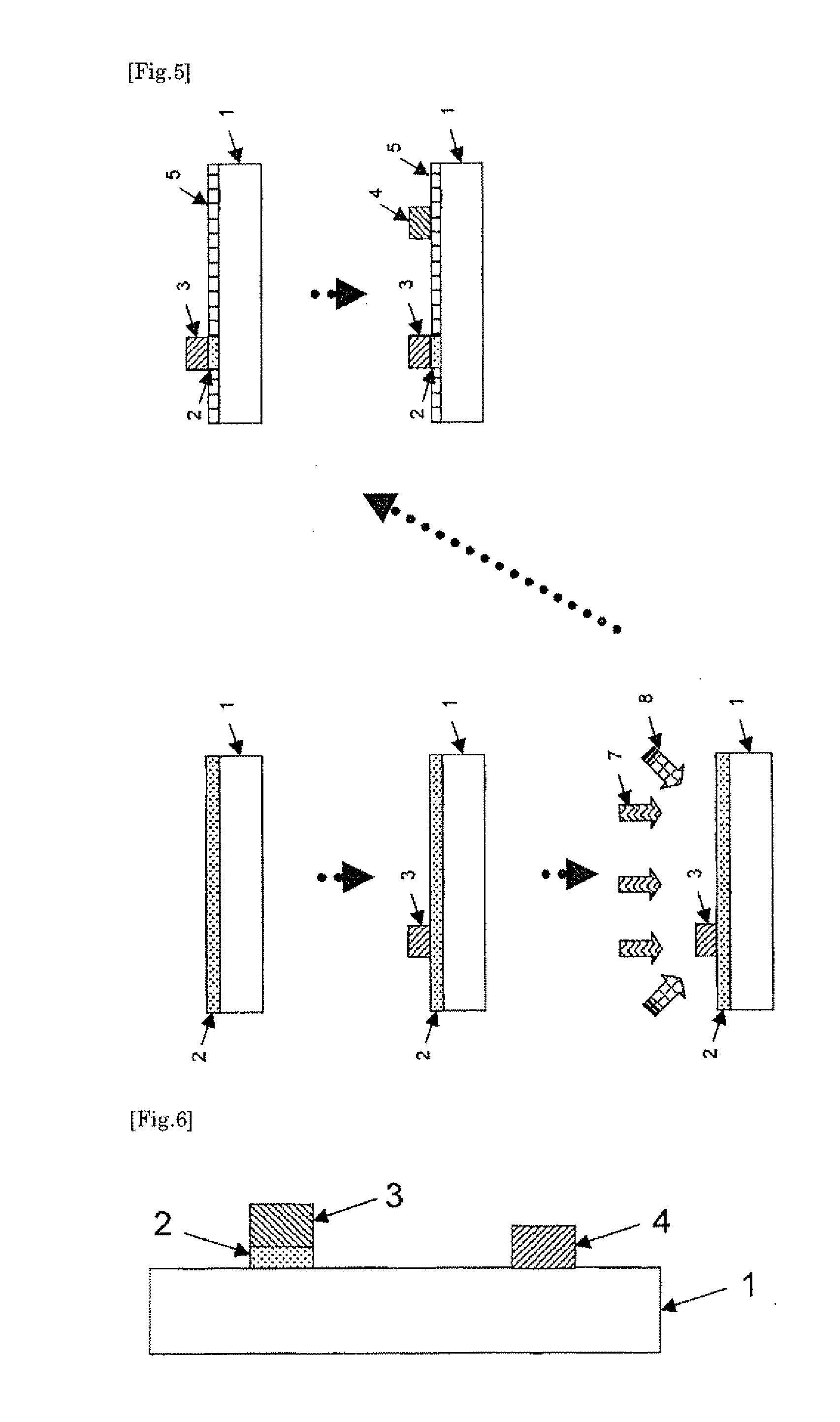Diamond semiconductor device
- Summary
- Abstract
- Description
- Claims
- Application Information
AI Technical Summary
Benefits of technology
Problems solved by technology
Method used
Image
Examples
example 1
[0086]A p-type semiconducting single crystal doped with boron at a concentration of 2×1015 cm−3 (dimension: 3 mm length×3 mm width×20 μm thickness) was formed on a high-resistance diamond single crystal (dimension: 3 mm length×3 mm width×0.5 mm thickness), and the thus-formed crystal was used as a substrate. In the same manner as in the above-mentioned Reference Example, the surface of the single-crystal substrate (1) was processed for hydrogen termination.
[0087]Next, using gold as an electrode material, an electrode (3) having a thickness of 40 nm was formed on the hydrogen-terminated surface (2), according to a vacuum vapor deposition method.
[0088]Next, using an excimer lamp, UV rays at a wavelength of 172 nm were radiated to the substrate (1) with the electrode (3) formed thereon, at an irradiance of 10 mW / cm2 for an irradiation time of 10 minutes in an oxygen atmosphere under the condition of an oxygen partial pressure of 100 Torr, thereby forming an insulating region by oxygen ...
example 2
[0091]A diamond semiconductor device having the structure shown in FIG. 2 was fabricated in the same manner as in Example 1, in which, however, the electrode (4) of gold was formed on the hydrogen-terminated surface (2).
[0092]The diamond semiconductor device was tested for the electric conductivity characteristics thereof at room temperature according to a current-voltage test method in the same manner as in Example 1. The test result is shown in FIG. 13 as a graph. The graph confirms good conductivity. No surface leakage current was detected.
example 3
[0093]A p-type semiconducting single crystal doped with boron at a concentration of 1×1016 cm−3 (dimension: 3 mm length×3 mm width×0.5 mm thickness) was used as a substrate; and in the same manner as in the above-mentioned Reference Example, both surfaces of the single-crystal substrate (1) were processed for hydrogen termination.
[0094]Next, using gold as an electrode material, an electrode (3) having a thickness of 40 nm was formed on the hydrogen-terminated surface (2), according to a vacuum vapor deposition method; and then similarly, using gold as an electrode material, an electrode (4) having a thickness of 40 nm was formed on the other surface opposite to the hydrogen-terminated surface (2), according to a vacuum vapor deposition method.
[0095]Next, using an excimer lamp, UV rays at a wavelength of 172 nm were radiated to the substrate (1) with the electrode (3) formed thereon, at an irradiance of 10 mW / cm2 for an irradiation time of 10 minutes in an oxygen atmosphere under the...
PUM
 Login to View More
Login to View More Abstract
Description
Claims
Application Information
 Login to View More
Login to View More - R&D
- Intellectual Property
- Life Sciences
- Materials
- Tech Scout
- Unparalleled Data Quality
- Higher Quality Content
- 60% Fewer Hallucinations
Browse by: Latest US Patents, China's latest patents, Technical Efficacy Thesaurus, Application Domain, Technology Topic, Popular Technical Reports.
© 2025 PatSnap. All rights reserved.Legal|Privacy policy|Modern Slavery Act Transparency Statement|Sitemap|About US| Contact US: help@patsnap.com



